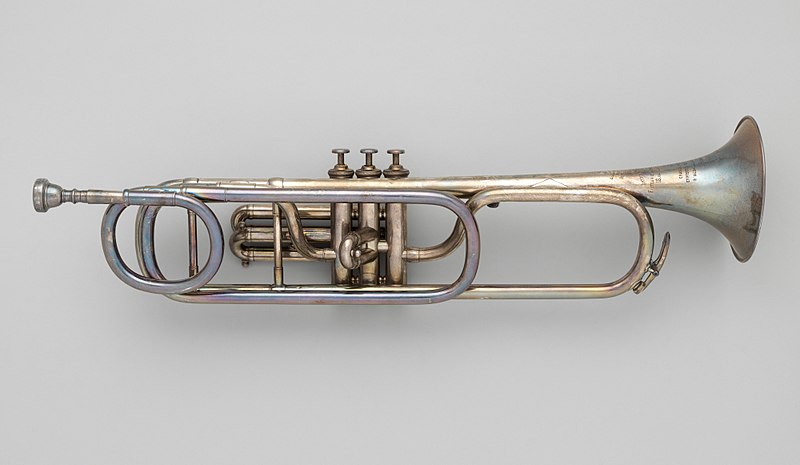How about we start with a typical inquiry do Trumpets Have Slides?
Trumpets have four slides: the first valve which is the main one slide and three-valve slides. The fundamental tuning slide is utilized first to make general tuning changes. Trumpet players then, at that point, utilize the first and third valve slides to address more smaller pitch propensities while playing.
Do All Trumpets Have Slides?
All trumpets have slides with the goal that every player can appropriately tune their instrument.
With various temperature changes or little changes in embouchure, a player’s pitch differs from one day to another. They can fix this issue by moving the primary tuning slide or any of the valve slides.
It’s significant not to mistake the slides for the valves. Not all trumpets have revolving valves that moves round to change pitch. As a trumpet player, you’ll utilize the two valves and slides to perfect your pitch, yet each works differently in their own way.
What are slides used for
A slide is a long part of tubing that is used on a trumpet to make the player change their pitch. Slides can be used for various things, but their main purpose is to help the player reach a new note.
They are also beneficial in cases where regular trumpets don’t have a wide enough range without valves. Slides allow the player to change their pitch more quickly and easily than just moving the mouthpiece, which is often helpful during solos.
How Do You Use a Trumpet Valve Slide?
To start with, observe where your tuning slides are. Your fundamental tuning slide will be at the far edge of your lead pipe, farthest away from the mouthpiece. This is utilized for general pitch, so it is the greatest slide.
The primary valve slide will be on the principal valve, reaching out toward your mouthpiece. The subsequent valve slide will point outward from the subsequent valve. The third valve slide is at the lower part of the third valve and focuses toward the bell.
You’ll change pitch utilizing the first and third valve slides. No instrument can play each and every note in order, so you’ll utilize these valve slides to change pitch as you’re playing.
Work on moving the valve slides to address each pitch tendency. The valves will have rings joined with the goal that they are effectively moveable. For sharp notes, pull a valve slide out. Push the slide in for level notes.
Why trumpet slides are better than valves
Trumpet slides are a great alternative to the standard valves on a trumpet. They are small pieces of material that can make all the difference in your sound by adjusting the pitch of your instrument with just one little move of your hand, which is perfect if you’re looking for an easy way to switch up your playing style.
There are many different sizes and shapes of slides, so it’s important to find the right one for your trumpet. They come in different lengths and widths, so you can customize your sound to fit your own style. And since they’re easy to use, you can quickly adjust your pitch during solos without having to take off and put back on your mouthpiece.
How to find the right slide for you
Finding a slide that fits your mouthpiece is crucial to playing well. To start, buy a few different types of slides to see which one suits you. Next, make sure it’s the right size and shape by putting it on your mouthpiece and sliding it back and forth.
The material the slide is made out of determines how it sounds, so experiment with whichever type you like best. Finally, buy a slide that has a good feel to it–this might take some trial and error. You don’t want it to be too slippery or too tight, so it’s important to find one that’s comfortable for you to use.
Ways to improve your sound with a slide
There are many different ways to improve your sound when using a slide on your trumpet. Here are seven of the most important:
- Experiment with different slides until you find one that fits your mouthpiece and sounds good to you.
- Make sure the slide is the right size and shape for your trumpet before you buy it.
- Experiment with different materials to see which one gives you the best sound.
- Find a slide that has a good feel to it–this might take some trial and error.
- Practice using your slide to get used to the new way of playing.
- Use a slide during solos to create a unique sound that other trumpeters can’t imitate.
- Use a slide to enhance your playing style and create a sound that’s all your own.
How much can the main tuning slide affect the tone
The main tuning slide will affect the tone of the trumpet. The more the slide is open, the more it will affect the sound. When you move to higher notes, you’ll need to close up the main tuning slide in order to compensate for this.
This might produce a better sound, but if you’re playing lower notes, this would be difficult because it would impede your ability to reach lower notes with any ease.
Conclusion
Trumpet slides are extraordinarily helpful when attempting to keep all notes in tune. Though the primary tuning slide is the most significant for general tuning, players can likewise make miniature changes utilizing the first and third valve slides.
It might require some investment to become accustomed to moving these slides precisely, but with steady practice you will be a pro in no time.







